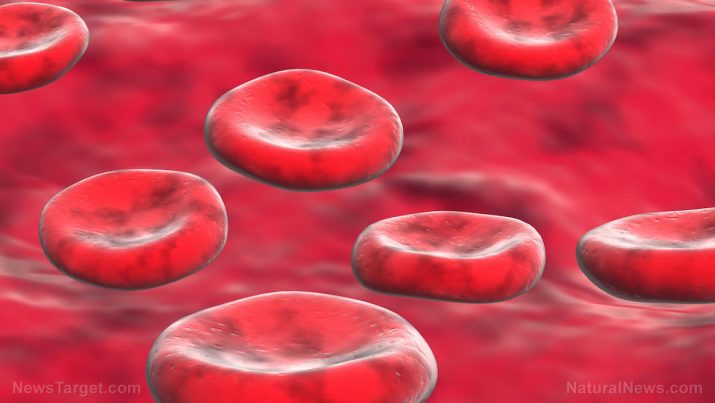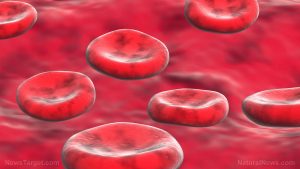
Agnogenic myeloid metaplasia – causes, side effects and treatments at NaturalPedia.com
Wednesday, January 03, 2018 by Zoey Sky
http://www.naturalpedia.com/agnogenic-myeloid-metaplasia-causes-side-effects-and-treatments-at-naturalpedia-com.html

Agnogenic myeloid metaplasia – also known as myelofibrosis (MF), chronic idiopathic myelofibrosis, idiopathic myeloid metaplasia, or MMM (myelofibrosis with myeloid metaplasia) – is the spontaneous scarring (or “fibrosis”) of the bone marrow that disrupts the normal production of blood cells. Agnogenic myeloid metaplasia often begins slowly and a patient’s condition deteriorates over time. The disorder is usually associated with a variety of diseases, mainly myeloproliferative (preleukemic) disorders.

Known side effects of agnogenic myeloid metaplasia
Risk factors for agnogenic myeloid metaplasia include:
- Smoking
- Radiation exposure
- Exposure to certain industrial chemicals
- Chemotherapy
- Certain viruses (in rare cases)
Side effects of agnogenic myeloid metaplasia include:
- Abdominal pain and fullness, especially just below the left side of the rib cage
- Shortness of breath, fatigue
- Susceptibility to infection
- Easy bruising
- Persistent bleeding
- Presence of kidney stones
- Fever
- Night sweats
- Bone pain
- Unhealthy, pale appearance/pallor
Body systems harmed by agnogenic myeloid metaplasia
A lot of the symptoms of agnogenic myeloid metaplasia are related to abnormalities affecting the production of the three main types of blood cells: Red and white cells and platelets.
The specific symptoms and progression of primary myelofibrosis vary from person to person:
- An abnormally enlarged spleen (splenomegaly) – Splenomegaly can cause pain or a feeling of fullness in the upper left portion of the stomach. It can also cause severe pain in the upper left shoulder (referred pain).
- Abnormal enlargement of the liver (hepatomegaly) – Occurs in almost two-thirds of patients. Splenomegaly or hepatomegaly may occur because of extramedullary hematopoiesis, or an abnormal process where blood cells develop outside of the bone marrow.
- Extramedullary hematopoiesis – Can also cause masses (or fibrohematopoietic tumors) to form in the gastrointestinal tract, lungs, skin, liver, spleen and other areas of the body. Symptoms associated with fibrohematopoietic tumors occur because of the compression of nearby structures or the impaired function of an affected organ.
- Fibrohematopoietic tumors in the gastrointestinal tract – Can lead to excessive bleeding, tumors in the brain that can cause neurological complications, and tumors near the spine that can compress the spinal cord.
- Bone or joint pain – Can develop later in the course of the disease.
- Increased blood pressure of the main artery delivering blood to the liver (portal hypertension) – Caused by excess blood flow from the spleen. Increased blood pressure of the main artery of lungs (pulmonary hypertension) may also occur.
Food items or nutrients that may prevent agnogenic myeloid metaplasia
The following herbs can be used to treat agnogenic myeloid metaplasia:
- Gentian – An effective herb that helps improve the absorption of nutrients.
- Dandelion roots – Has a high iron content that can help lessen the effects of the disorder.
- Yellow dock – Helps treat the symptoms of myelofibrosis.
- Stinging nettle – Another useful herb used to treat myelofibrosis.
- Alfalfa – A nourishing herb, especially when taken in tablet form.
- Spirulina – Rich in vitamin B12, spirulina also contains a phytonutrient called phycocyanin which is very helpful in stimulating the production of several stem cells for the bone marrow.
- Burdock root – Often used to cure many disorders.
- Dong quai – A Chinese herb often used to treat the symptoms of myelofibrosis.
Treatments, management plans for agnogenic myeloid metaplasia
Treatment options for agnogenic myeloid metaplasia include:
- Bone marrow transplant
- Chronic blood infusions
- Iron chelation therapy
- Surgical removal of parts of the enlarged spleen (splenectomy)
- Chemotherapy, if the disease in its early-stage, and administration of the following drugs: Thalidomide, Melphalanine, Interferon-alpha, and Kinase inhibitors.
Where to learn more
Summary
Agnogenic myeloid metaplasia – also known as myelofibrosis (MF), chronic idiopathic myelofibrosis, idiopathic myeloid metaplasia, or MMM (myelofibrosis with myeloid metaplasia) – is the spontaneous scarring (or “fibrosis”) of the bone marrow that disrupts the normal production of blood cells.
Indicators for agnogenic myeloid metaplasia include abdominal pain and fullness, fatigue, and susceptibility to infection.
Treatment options for agnogenic myeloid metaplasia include bone marrow transplant, chronic blood infusions, and iron chelation therapy.
Sources include:
Tagged Under: Tags: agnogenic myeloid metaplasia





